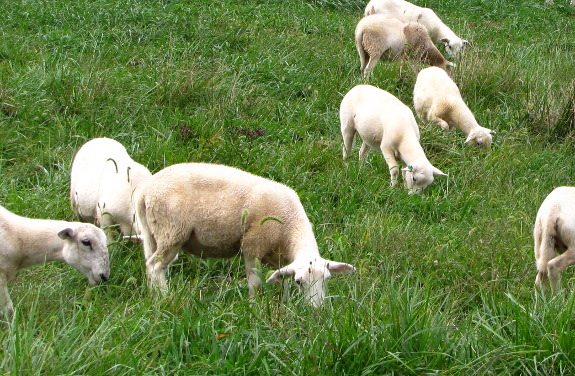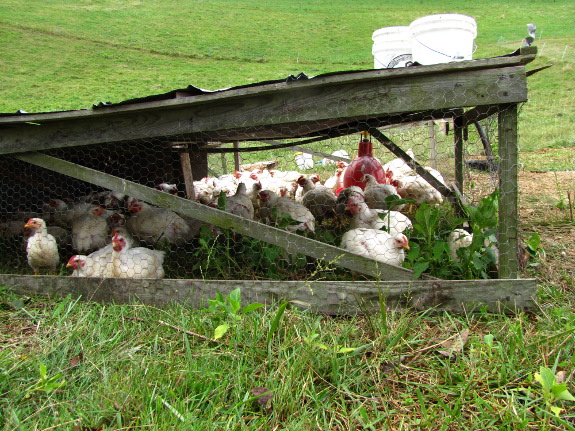
Maintainer livestock: Chickens, sheep, and cows

Yesterday, I talked
about colonizer
livestock (pigs and goats) that can be used to turn
troubled areas into pasture. Today, I'll discuss what you do with
those new pastures to make them more diverse, fertile, and nutritious
every year.
Maintainer livestock
live on good pasture, where they have two jobs. First, they need
to keep the pasture cropped relatively short so that it'll keep
producing succulent new growth that is easy to munch up (and that won't
turn into those less nutritious weeds that only colonizers
enjoy.) Second, maintainers add nutrients to the soil with their
excrement, fertilizing the pasture as they graze.
Joel Salatin's system
uses cows and chickens as his maintainer species, and in general a
grass-eating ruminant paired with some sort of poultry is a good
combination. Megan and Erek focus primarily on hair sheep and chickens, both being raised for
meat. Megan notes that the chickens, especially, increase the
fertility of the pasture dramatically, while the tearing action of the
grazing sheep seems to stimulate plant growth.

Salatin claims nearly
unbelievable savings on feed by raising his chickens on pasture.
He notes that his laying hens are able to eat just corn instead of
balanced rations while on summer pasture, getting their protein from
the land (a savings of 42% in cost per pound of feed.) Meanwhile,
these hens are only eating 0.07 pounds of feed per hen per day compared
to 0.3 pounds that some of his neighbors feed and 0.25 pounds that we
feed. His broiler savings are pretty serious too, with feed costs
30% less than they would have been off pasture. And, of course,
the meat and eggs from the chickens and cows are high quality, pastured
products.
Although the cost
savings are a bit debatable (others have trouble replicating Salatin's
results there), the pasture quality changes are dramatic. Grazing
two or more maintainer species that have slightly different food
preferences keeps the pasture extremely diverse and healthy.
Farmers who follow Salatin's lead say that they're growing pasture, not
animals --- this is additive farming, the furthest thing you'll find
from extractive, modern methods.
| This post is part of our Salatin-style Pasturing lunchtime series.
Read all of the entries: |
Want more in-depth information? Browse through our books.
Or explore more posts by date or by subject.
About us: Anna Hess and Mark Hamilton spent over a decade living self-sufficiently in the mountains of Virginia before moving north to start over from scratch in the foothills of Ohio. They've experimented with permaculture, no-till gardening, trailersteading, home-based microbusinesses and much more, writing about their adventures in both blogs and books.
Want to be notified when new comments are posted on this page? Click on the RSS button after you add a comment to subscribe to the comment feed, or simply check the box beside "email replies to me" while writing your comment.
